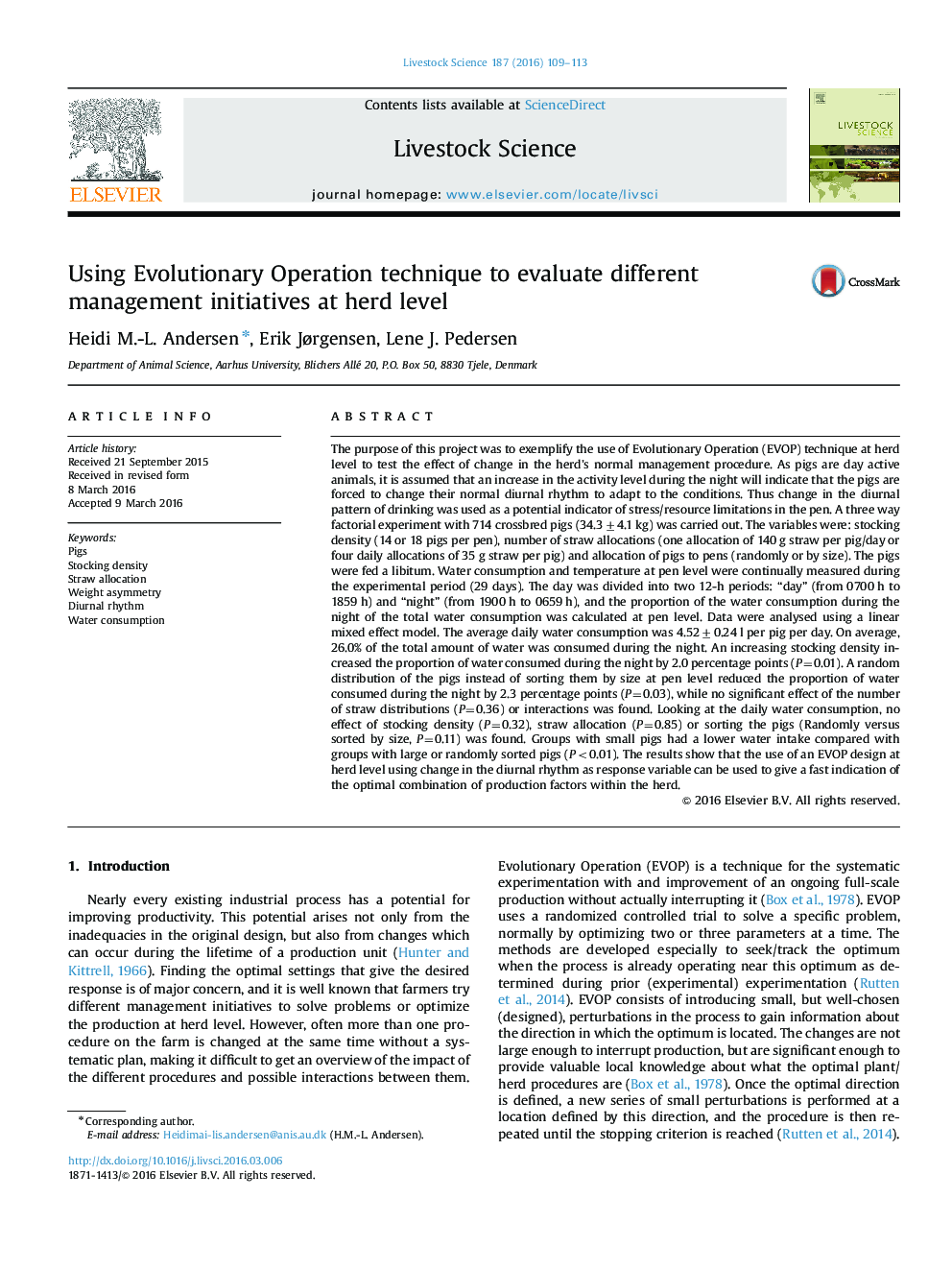| کد مقاله | کد نشریه | سال انتشار | مقاله انگلیسی | نسخه تمام متن |
|---|---|---|---|---|
| 5789963 | 1553945 | 2016 | 5 صفحه PDF | دانلود رایگان |
عنوان انگلیسی مقاله ISI
Using Evolutionary Operation technique to evaluate different management initiatives at herd level
ترجمه فارسی عنوان
با استفاده از روش عملیات تکاملی برای ارزیابی ابتکارات مدیریتی مختلف در سطح گله
دانلود مقاله + سفارش ترجمه
دانلود مقاله ISI انگلیسی
رایگان برای ایرانیان
کلمات کلیدی
خوک ها، چگالی جوراب، تخصیص کراوات، عدم تقارن وزن، ریتم روزانه، مصرف آب،
موضوعات مرتبط
علوم زیستی و بیوفناوری
علوم کشاورزی و بیولوژیک
علوم دامی و جانورشناسی
چکیده انگلیسی
The purpose of this project was to exemplify the use of Evolutionary Operation (EVOP) technique at herd level to test the effect of change in the herd's normal management procedure. As pigs are day active animals, it is assumed that an increase in the activity level during the night will indicate that the pigs are forced to change their normal diurnal rhythm to adapt to the conditions. Thus change in the diurnal pattern of drinking was used as a potential indicator of stress/resource limitations in the pen. A three way factorial experiment with 714 crossbred pigs (34.3±4.1 kg) was carried out. The variables were: stocking density (14 or 18 pigs per pen), number of straw allocations (one allocation of 140 g straw per pig/day or four daily allocations of 35 g straw per pig) and allocation of pigs to pens (randomly or by size). The pigs were fed a libitum. Water consumption and temperature at pen level were continually measured during the experimental period (29 days). The day was divided into two 12-h periods: “day” (from 0700 h to 1859 h) and “night” (from 1900 h to 0659 h), and the proportion of the water consumption during the night of the total water consumption was calculated at pen level. Data were analysed using a linear mixed effect model. The average daily water consumption was 4.52±0.24 l per pig per day. On average, 26.0% of the total amount of water was consumed during the night. An increasing stocking density increased the proportion of water consumed during the night by 2.0 percentage points (P=0.01). A random distribution of the pigs instead of sorting them by size at pen level reduced the proportion of water consumed during the night by 2.3 percentage points (P=0.03), while no significant effect of the number of straw distributions (P=0.36) or interactions was found. Looking at the daily water consumption, no effect of stocking density (P=0.32), straw allocation (P=0.85) or sorting the pigs (Randomly versus sorted by size, P=0.11) was found. Groups with small pigs had a lower water intake compared with groups with large or randomly sorted pigs (P<0.01). The results show that the use of an EVOP design at herd level using change in the diurnal rhythm as response variable can be used to give a fast indication of the optimal combination of production factors within the herd.
ناشر
Database: Elsevier - ScienceDirect (ساینس دایرکت)
Journal: Livestock Science - Volume 187, May 2016, Pages 109-113
Journal: Livestock Science - Volume 187, May 2016, Pages 109-113
نویسندگان
Heidi M.-L. Andersen, Erik Jørgensen, Lene J. Pedersen,
